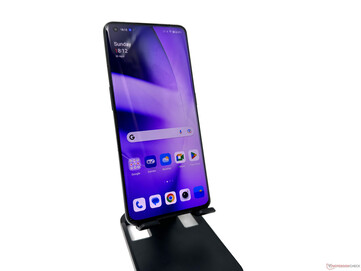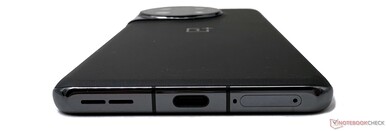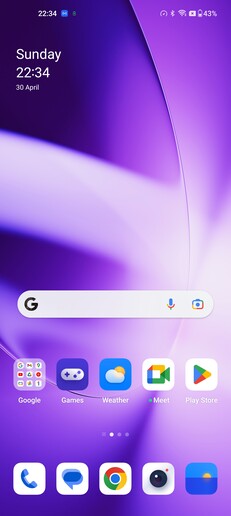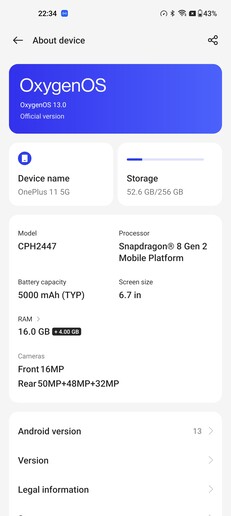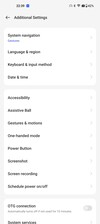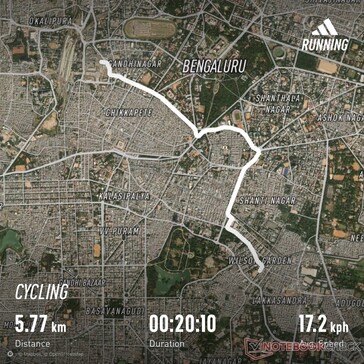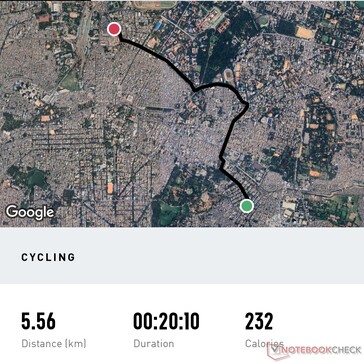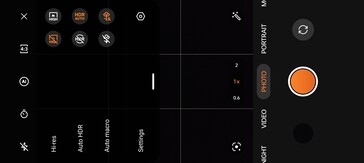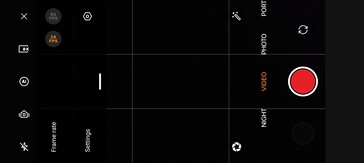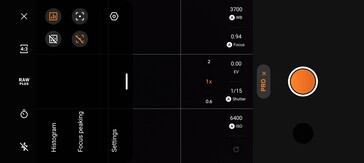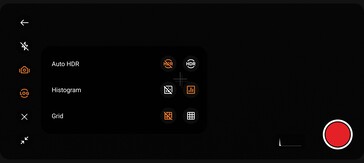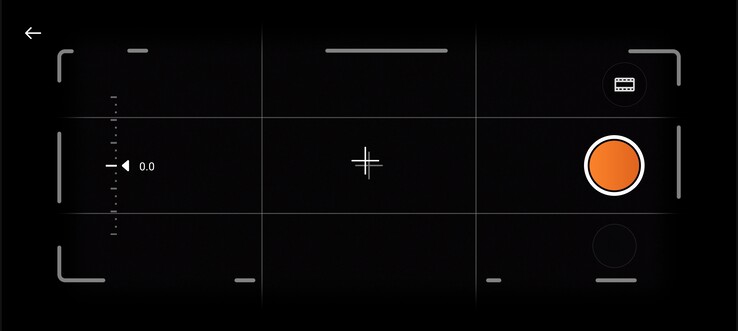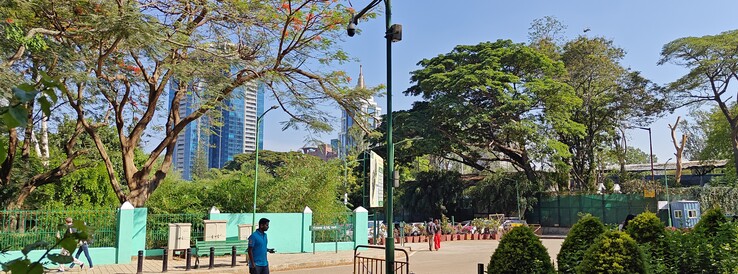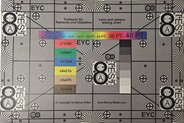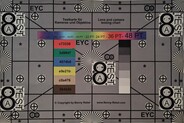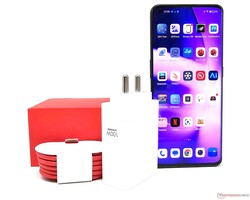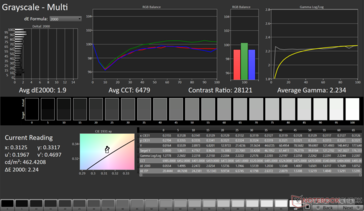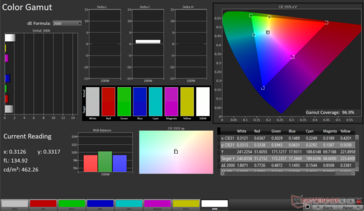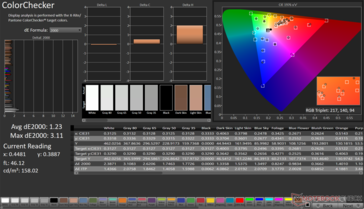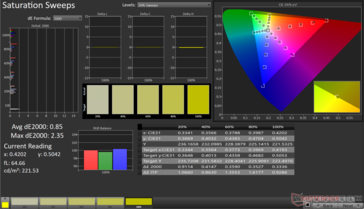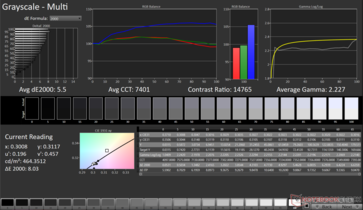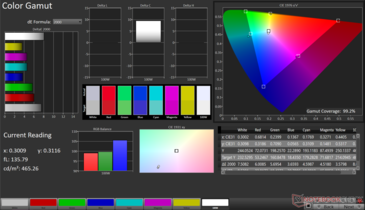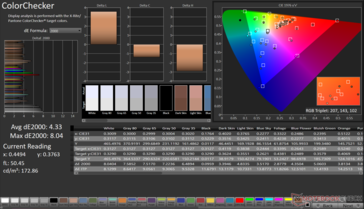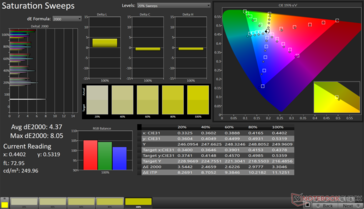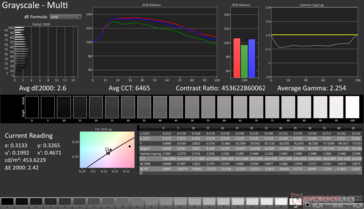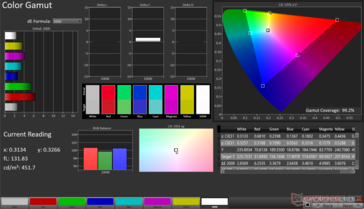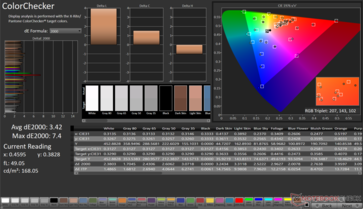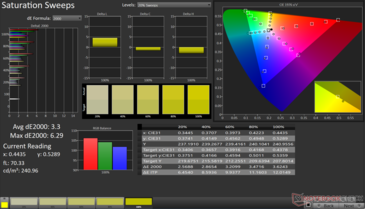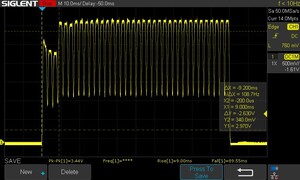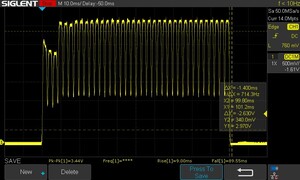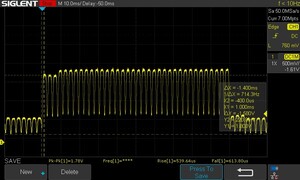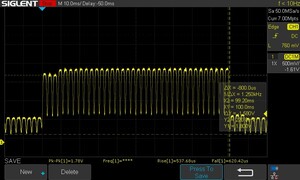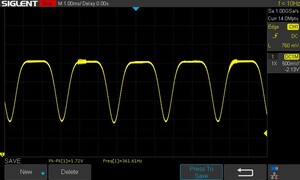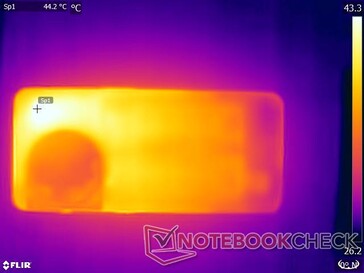OnePlus 11 5G Smartphone Review: A competitive Snapdragon 8 Gen 2 flagship with some unmissable quirks
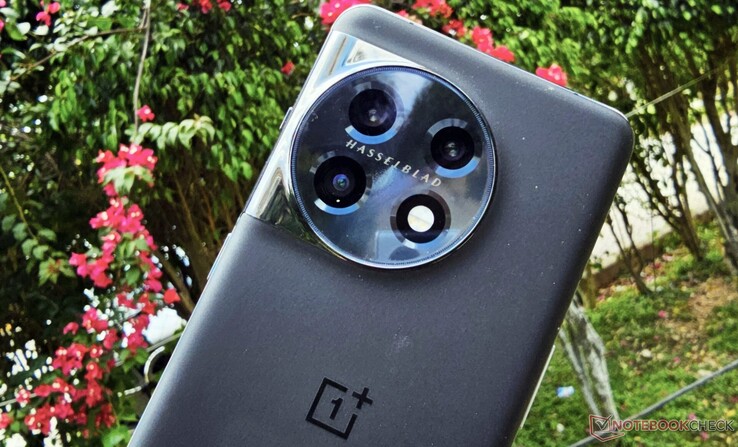
Last year's OnePlus 10 Pro was a good smartphone overall, but it felt lacking in some ways compared to its predecessor, the OnePlus 9 Pro. With the OnePlus 11 this year, OnePlus has dropped the "Pro" moniker altogether but has endowed the device with flagship-level components in most aspects.
We see upgrades such as the 4 nm Qualcomm Snapdragon 8 Gen 2 SoC, higher RAM and faster storage options, an improved 50 MP IMX890 main sensor, and a macro-capable ultra-wide 48 MP IMX581 sensor to name a few.
Our test OnePlus 11 5G smartphone comes in a Titan Black color option and boasts 16 GB of LPDDR5X RAM and 256 GB of UFS 4.0 storage. This configuration retails for ₹61,999 (US$800) in the Indian market before discounts and special offers. There's also a base variant with 8 GB RAM and 128 GB UFS 3.0 storage for ₹56,999 (US$699).
In this review, we take a good look at the OnePlus 11 5G and see how it fares in comparison with other flagship devices from the competition.
Potential Competitors in Comparison
Rating | Date | Model | Weight | Height | Size | Resolution | Price |
|---|---|---|---|---|---|---|---|
| 89.1 % v7 (old) | 05 / 2023 | OnePlus 11 5G SD 8 Gen 2, Adreno 740 | 205 g | 8.5 mm | 6.70" | 3216x1440 | |
| 88.1 % v7 (old) | 06 / 2022 | OnePlus 10 Pro SD 8 Gen 1, Adreno 730 | 200.5 g | 8.6 mm | 6.70" | 3216x1440 | |
| 91.1 % v7 (old) | 03 / 2023 | Samsung Galaxy S23 Ultra SD 8 Gen 2 for Galaxy, Adreno 740 | 233 g | 8.9 mm | 6.80" | 3080x1440 | |
| 90.3 % v7 (old) | 03 / 2023 | Samsung Galaxy S23+ SD 8 Gen 2 for Galaxy, Adreno 740 | 195 g | 7.6 mm | 6.60" | 2340x1080 | |
| 89.2 % v7 (old) | 03 / 2023 | Xiaomi 13 Pro SD 8 Gen 2, Adreno 740 | 229 g | 8.38 mm | 6.73" | 3200x1440 | |
| 89.1 % v7 (old) | 02 / 2023 | Vivo X90 Pro Dimensity 9200, Immortalis-G715 MP11 | 214.9 g | 9.3 mm | 6.78" | 2800x1260 | |
| 90.3 % v7 (old) | 01 / 2023 | Apple iPhone 14 Pro A16, A16 GPU 5-Core | 206 g | 7.85 mm | 6.10" | 2556x1179 | |
| 90.2 % v7 (old) | 05 / 2023 | Asus ROG Phone 7 Ultimate SD 8 Gen 2, Adreno 740 | 239 g | 10.3 mm | 6.78" | 2448x1080 |
Case: Circular camera hump stands out
The OnePlus 11 5G is available in two color options: matte Titan Black (our variant) and glossy Eternal Green. The matte surface of the Titan Black is a tad slippery but is largely fingerprint resistant.
The front display panel is protected by Corning Gorilla Glass Victus that seamlessly transitions with minimal curvature into the chrome aluminum frame and the rear.
The completely sealed unibody construction looks and feel premium. OnePlus has done away with publishing IP ratings from the 10 Pro onwards. That being said, the OnePlus 11 is only IP64 rated — a downgrade from the 10 Pro's IP68 rating (at least on T-Mobile variants) — so it is only resistant to dust ingress and the occasional splash.
The circular camera hump with the stand-out Hasselbland branding is the primary differentiating aspect of the OnePlus 11 from its predecessor.
Overall, the OnePlus 11's overall ergonomics are comfortable even though it is 5 g heavier than the OnePlus 10 Pro.
Hardware features: No wireless charging and USB 2.0 downgrade
While the 10 Pro offered 50 W AirVOOC wireless charging and supported the USB 3.2 standard, the OnePlus 11 5G foregoes these to keep the price competitive. The offered USB Type-C connector is internally only capable of USB 2.0 speeds but supports OTG functionality.
On the plus side, OnePlus offers UFS 4.0 internal storage. However, this is only offered in the top-end 256 GB variant. The user gets about 219 GB of free space to play with.
The external layout is not too different from the 10 Pro. Interestingly, we get to see an additional hole on the top frame that most likely functions as a speaker vent.
There is no scope for microSD storage expansion. OnePlus experimented with removing the iconic alert slider in the 10T. Thankfully, the slider is back where it belongs in the 11 5G.
Software: OxygenOS 13 with four years of feature updates
The OnePlus 11 comes with OxygenOS 13 based on Android 13 with security patches current up to March 2023 as of date. OnePlus's initial move to merge OxygenOS with that of Oppo's ColorOS drew a lot of flak prompting the company to reverse its decision.
OxygenOS and ColorOS still stem from a common codebase, but OnePlus's software feels a lot lighter and bereft of any bloatware. The only apps that come pre-installed apart from the Google suite are Netflix and a few OnePlus apps such as Notes, Community, Clone Phone, and My Files.
The OS operation is slick and highly responsive with no perceivable stutter or lag with a ton of customization options on offer. The smartphone is Widevine L1-certified for high resolution DRM video streaming.
With the OnePlus 11, the company is promising four years of feature updates and five years of security patches. The Google Pixel 7 series, on the other hand, come with three years of feature updates, so the OnePlus smartphone does offer some value in this regard.
Communication and GNSS: Fast, stable Wi-Fi 6 throughput
OnePlus advertises Wi-Fi 7 support, but the 11 5G could only identify and connect to a 5 GHz Wi-Fi 6 SSID with our reference Asus ROG Rapture GT-AXE11000 router. The 6E SSID was not detected.
Nevertheless, we see excellent Wi-Fi throughput that is quite stable throughout the duration of the test.
While the Galaxy S23+ and the S23 Ultra manage to inch past the OnePlus 11 in the transmit test, the latter tops the charts in receive tests with speeds around the 1.9 Gbps mark.
The Indian variant of the OnePlus 11 supports a total of 26 LTE bands and 13 5G NR bands. International roaming shouldn't be an issue, but the phone does not support mmWave bands such as n260.
The OnePlus 11 supports several positioning systems including GPS (L1+L5), GLONASS, Galileo (E1+E5a), Beidou, A-GPS, QZSS, and NavIC.
GPS tracking is largely on point but can definitely be a lot more accurate.
In a test drive together with the Apple iPhone 14 Pro, the OnePlus 11 logged the total distance as 5.56 km against the iPhone 14 Pro's 5.77 km.
Telephone and Voice Quality: eSIM support for the first time
The 11 5G is the first OnePlus device to offer eSIM support. The phone supports dual-SIM dual-standby. You can use a combination of two physical nano-SIMs or a nano-SIM and an eSIM. VoLTE and Wi-Fi calling are supported.
We experienced no issues during calls on the AirTel 5G network with a good signal strength. The conversation partner's voice sounded natural in the earpiece with no perceivable distortions. Calls using the speakerphone were clear as well.
Google Phone is offered as the default call and contacts management app. The Indian variant of the device offers in-built call recording, but all parties in the call will be intimated about this upfront.
Cameras: Welcome improvements over the 10 Pro
The 16 MP IMX471 selfie camera in the OnePlus 11 is the exact same unit found in the 10T, although the 10 Pro sported a 32 MP IMX615.
Selfies come out well in decent lighting conditions. There is good detailing in the image with good color reproduction. There can be some loss of refinement at the edges depending on the object and the background scene, but the bokeh effect is quite convincing in general.
The front camera is essentially the same hardware found in the OnePlus 8 Pro, or even the OnePlus 7 Pro. The unit in the OnePlus 11 has a lower f/2.5 aperture (f/2.0 in the 7 Pro) but benefits from improvements in software image processing over the years.
The older sensor does mean that selfie videos are capped at 1080p 30 fps while the competition has moved on to offer at least 4K 30 fps.
The rear camera setup brings some important changes this time. The 50 MP IMX890 sensor with a 1/1.56" sensor, a wide f/1.8 aperture, and OIS is a departure from previous OnePlus flagships that offered a larger 1/1.43" sensor.
OnePlus has also cut the telephoto zoom from 3x in the 10 Pro to 2x in the 11 5G. Also, the field-of-view for the ultra-wide camera is reduced to 115° from the 150° in the 10 Pro. Some solace comes from the fact that the ultra-wide now supports macro stills unlike the 10 Pro, which wasn't really cut-out for close-up photography.
Despite the apparent reduction in specifications, the OnePlus 11's photos are a marked improvement over that of the 10 Pro. Photos from the main camera have good dynamic range with no perceivable noise or fringing artefacts. Images are binned to 12.5 MP by default unless explicitly shot at 50 MP.
The telephoto and ultra-wide cameras also produce comparably good images as the main camera. Details are well-preserved and colors are represented well. The ultra-wide can auto switch to macro mode when the subject is close enough. This can be disabled if needed.
Macro shots come out good with a nice amount of detail, although they can definitely use some improved sharpness.
Night mode shots with the main camera are actually quite good in terms of reduced noise and overall detailing. However, some of the finer aspects aren't resolved well (such as the library building's name in the photo below) in comparison with the Apple iPhone 14 Pro and the Samsung Galaxy S23 Ultra.
Image comparison
Choose a scene and navigate within the first image. One click changes the position on touchscreens. One click on the zoomed-in image opens the original in a new window. The first image shows the scaled photograph of the test device.
Main CameraTelephoto 2xTelephoto 2xUltra-wide 0.6xLow lightThe OnePlus 11 performs well in testchart and ColorChecker captures. Maximum color deviation Delta Es of 9.75 and 20.46 in normal light and 1 lux, respectively are seen with the lighter orange shade.
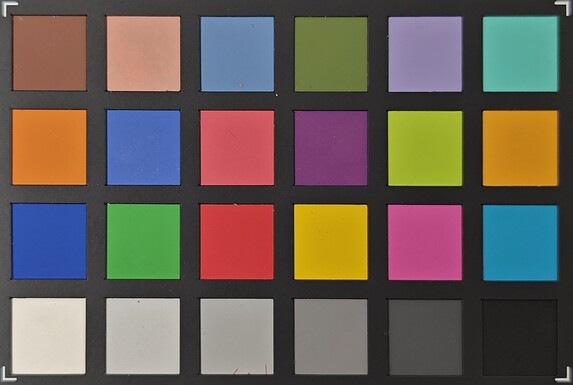
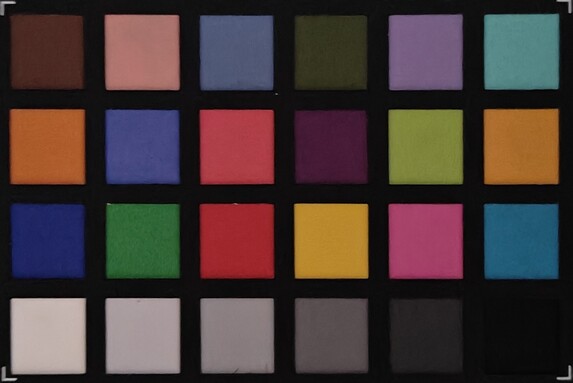
Accessories and Warranty: 100 W SuperVOOC charger included
In the box, we get a 100 W SuperVOOC charger with a USB Type-A to Type-C cable, a protective case, pre-applied screen protector, SIM eject tool, and the usual paperwork.
Other accessories such as a choice of OnePlus earphones, including the OnePlus Buds Pro 2, can be purchased separately.
In India, the OnePlus 11 5G comes with a one-year limited warranty. This can be topped up with a warranty extension and additional protection plans during checkout. A 12-month warranty extension will set you back by another ₹999.
Or, you can opt for a 12-month Accident Damage Protection Plan for ₹3,799 or a 2-year OnePlus Care plan for ₹5,999 that covers accidental damage from drops and liquids. There's also a one-year screen-protection plan for ₹2,799 available.
Input Devices and Operation: Up to 1,000 Hz touch sampling
The OnePlus 11 does not offer an ultrasonic fingerprint reader like the Galaxy S23 Ultra, but the optical fingerprint reader is quite fast and responsive. Additionally, a less secure 2D face unlock is also available.
The haptics are nice and well-pronounced. The OS integrates Oppo's O-Haptics feature that offers fine-grained control over haptic feedback.
The 120 Hz screen offers a touch sampling rate up to 1,000 Hz (according to OnePlus), which lends itself to a highly responsive UI and smooth navigation without hiccups.
Display: 10-bit QHD+ LTPO3 AMOLED with Dolby Vision and PWM
The OnePlus 11 features a 6.7-inch 20.1:9 QHD+ LTPO3 AMOLED display with a high 526 ppi pixel density and a dynamic refresh rate between 1 and 120 Hz.
The refresh rate can be manually restricted to 60 Hz and the resolution lowered to FHD+ if needed. As with the OnePlus 10 Pro, once again we get to experience stutters and jerks at times when the device tries to auto adjust the refresh rate.
OnePlus advertises Dolby Vision HDR support, but the brightness topped-out at 479 nits in our testing — close to the rated 500 nits typical value. The company claims a 1,300 nits peak brightness, but we are unable to confirm this in our measurements. We could measure close to 600 nits brightness in APL 10 with HDR content, but that was about it.
| |||||||||||||||||||||||||
Brightness Distribution: 97 %
Center on Battery: 470 cd/m²
Contrast: ∞:1 (Black: 0 cd/m²)
ΔE ColorChecker Calman: 1.23 | ∀{0.5-29.43 Ø4.83}
ΔE Greyscale Calman: 1.9 | ∀{0.09-98 Ø5.1}
96.9% sRGB (Calman 2D)
Gamma: 2.23
CCT: 6479 K
| OnePlus 11 5G AMOLED, 3216x1440, 6.7" | OnePlus 10 Pro AMOLED, 3216x1440, 6.7" | Samsung Galaxy S23 Ultra Dynamic AMOLED 2x, 3080x1440, 6.8" | Samsung Galaxy S23+ Dynamic AMOLED 2x, 2340x1080, 6.6" | Xiaomi 13 Pro OLED, 3200x1440, 6.7" | Vivo X90 Pro AMOLED, 2800x1260, 6.8" | Apple iPhone 14 Pro Super Retina XDR OLED, 2556x1179, 6.1" | Asus ROG Phone 7 Ultimate AMOLED, 2448x1080, 6.8" | |
|---|---|---|---|---|---|---|---|---|
| Response Times | -292% | 35% | 71% | 11% | 58% | 55% | 65% | |
| Response Time Grey 50% / Grey 80% * | 2.2 ? | 16 ? -627% | 2.43 ? -10% | 0.98 ? 55% | 3.64 ? -65% | 1.56 29% | 1.81 ? 18% | 1.29 ? 41% |
| Response Time Black / White * | 10.6 ? | 6 ? 43% | 2.07 ? 80% | 1.37 ? 87% | 1.47 ? 86% | 1.35 ? 87% | 0.81 ? 92% | 1.2 ? 89% |
| PWM Frequency | 361.61 ? | 342.5 | 240 | 240 | 120 | 60 | 240 | 513 |
| Screen | 40% | 26% | 14% | 60% | 48% | 43% | 43% | |
| Brightness middle | 470 | 793 69% | 1117 138% | 1128 140% | 1230 162% | 1018 117% | 1046 123% | 1010 115% |
| Brightness | 470 | 776 65% | 1133 141% | 1136 142% | 1244 165% | 1026 118% | 1049 123% | 1016 116% |
| Brightness Distribution | 97 | 95 -2% | 97 0% | 99 2% | 94 -3% | 93 -4% | 98 1% | 95 -2% |
| Black Level * | ||||||||
| Colorchecker dE 2000 * | 1.23 | 0.79 36% | 2.2 -79% | 2.7 -120% | 1 19% | 0.9 27% | 1.2 2% | 1.3 -6% |
| Colorchecker dE 2000 max. * | 3.11 | 1.93 38% | 3.9 -25% | 4.5 -45% | 2.8 10% | 2.2 29% | 3.1 -0% | 2.5 20% |
| Greyscale dE 2000 * | 1.9 | 1.3 32% | 2.3 -21% | 2.6 -37% | 1.8 5% | 1.9 -0% | 1.7 11% | 1.6 16% |
| Gamma | 2.23 99% | 2.223 99% | 2.37 93% | 2.05 107% | 2.24 98% | 2.26 97% | 2.19 100% | 2.24 98% |
| CCT | 6479 100% | 6624 98% | 6572 99% | 6644 98% | 6446 101% | 6473 100% | 6538 99% | 6405 101% |
| Total Average (Program / Settings) | -126% /
-43% | 31% /
28% | 43% /
28% | 36% /
47% | 53% /
50% | 49% /
46% | 54% /
49% |
* ... smaller is better
Natural mode with default color temperature (Color space target: sRGB)
OnePlus offers several color profiles to choose from including Vivid, Natural, Cinematic, and Brilliant.
In our testing with the X-Rite i1Basic Pro 3 spectrophotometer and Calman Ultimate color calibration software from Portrait Displays, we found the Natural color profile to offer the best color accuracy and highest sRGB color gamut coverage.
Brilliant mode with default color temperature (Color space target: DCI-P3)
Brilliant offers the widest possible gamut, and accordingly we measure 99.2% DCI-P3 coverage. However, the Delta E values take a sizeable hit indicating low color accuracy.
Brilliant mode with warm color temperature (Color space target: DCI-P3)
The large color deviations in Brilliant can be somewhat offset by increasing the color temperature. This results in a much-improved Grayscale Delta E of 2.6. The average ColorChecker Delta E is 3.42, which is a slight improvement over the default color temperature.
Display Response Times
| ↔ Response Time Black to White | ||
|---|---|---|
| 10.6 ms ... rise ↗ and fall ↘ combined | ↗ 9.2 ms rise | |
| ↘ 1.4 ms fall | ||
| The screen shows good response rates in our tests, but may be too slow for competitive gamers. In comparison, all tested devices range from 0.1 (minimum) to 240 (maximum) ms. » 27 % of all devices are better. This means that the measured response time is better than the average of all tested devices (20.5 ms). | ||
| ↔ Response Time 50% Grey to 80% Grey | ||
| 2.2 ms ... rise ↗ and fall ↘ combined | ↗ 1.4 ms rise | |
| ↘ 0.8 ms fall | ||
| The screen shows very fast response rates in our tests and should be very well suited for fast-paced gaming. In comparison, all tested devices range from 0.165 (minimum) to 636 (maximum) ms. » 9 % of all devices are better. This means that the measured response time is better than the average of all tested devices (32.1 ms). | ||
Screen Flickering / PWM (Pulse-Width Modulation)
| Screen flickering / PWM detected | 361.61 Hz | ≤ 100 % brightness setting | |
The display backlight flickers at 361.61 Hz (worst case, e.g., utilizing PWM) Flickering detected at a brightness setting of 100 % and below. There should be no flickering or PWM above this brightness setting. The frequency of 361.61 Hz is relatively high, so most users sensitive to PWM should not notice any flickering. However, there are reports that some users are still sensitive to PWM at 500 Hz and above, so be aware. In comparison: 53 % of all tested devices do not use PWM to dim the display. If PWM was detected, an average of 8327 (minimum: 5 - maximum: 343500) Hz was measured. | |||
The response times seem to be affected by the PWM frequency. Therefore, we had to manually approximate the rise and fall times for black to white and 50% grey to 80% grey.
The display seems to be having trouble in attaining the full rise in the first pulse in both transitions.
OnePlus does not provide a DC Dimming mode in the 11 5G. We observed PWM at all tested brightness levels as shown below.
The OnePlus 11's display lends itself well to decent outdoor viewing. However, we have seen phones that amp up the brightness even higher in direct sunlight.
Viewing angles are stable with the AMOLED panel with only minimal brightness and color loss at the extremes.
Performance: Fast CPU performance in High Perf mode
Another iteration of a OnePlus flagship means a new SoC, and this time it is the Snapdragon 8 Gen 2 that integrates an Adreno 740 GPU.
OnePlus once again throttles CPU performance out-of-the-box, which negatively impacts the scores by up to 20%. Therefore, we used the High Performance mode for all testing except for battery tests that were run in the default mode.
Overall CPU performance in this mode is on par with other Snapdragon 8 Gen 2-powered phones we've tested so far, including the gaming-focused Asus ROG Phone 7 Ultimate. The OnePlus 11 5G also takes a convincing 11% lead over the Xiaomi 13 Pro in cumulative CPU benchmarks.
| UL Procyon AI Inference for Android - Overall Score NNAPI | |
| Vivo X90 Pro | |
| Average of class Smartphone (1267 - 81594, n=142, last 2 years) | |
| Samsung Galaxy S23 Ultra | |
| Samsung Galaxy S23+ | |
| Asus ROG Phone 7 Ultimate | |
| OnePlus 11 5G | |
| Xiaomi 13 Pro | |
| Average Qualcomm Snapdragon 8 Gen 2 (11338 - 16880, n=21) | |
Although the OnePlus 11 5G posted impressive results in CPU tests, it suffers some setback in GPU performance. The OnePlus 11 trails the ROG Phone 7 Ultimate by 15%, but the delta with the Galaxy S23 Ultra is only 5%.
Nevertheless, the Adreno 740 is a very capable GPU as evidenced by the significant 16% lead over the iPhone 14 Pro's A16 Bionic 5-core GPU in overall graphics tests.
3DMark: Wild Life Extreme Unlimited | Wild Life Extreme | Wild Life Unlimited Score | 2560x1440 Sling Shot Extreme (ES 3.1) Unlimited Physics | 2560x1440 Sling Shot Extreme (ES 3.1) Unlimited Graphics | 2560x1440 Sling Shot Extreme (ES 3.1) Unlimited
GFXBench (DX / GLBenchmark) 2.7: T-Rex Onscreen | 1920x1080 T-Rex Offscreen
GFXBench 3.0: on screen Manhattan Onscreen OGL | 1920x1080 1080p Manhattan Offscreen
GFXBench 3.1: on screen Manhattan ES 3.1 Onscreen | 1920x1080 Manhattan ES 3.1 Offscreen
GFXBench: on screen Car Chase Onscreen | 1920x1080 Car Chase Offscreen | on screen Aztec Ruins High Tier Onscreen | 2560x1440 Aztec Ruins High Tier Offscreen | on screen Aztec Ruins Normal Tier Onscreen | 1920x1080 Aztec Ruins Normal Tier Offscreen | 3840x2160 4K Aztec Ruins High Tier Offscreen
| GPU Performance Rating | |
| Asus ROG Phone 7 Ultimate | |
| Samsung Galaxy S23+ | |
| Xiaomi 13 Pro -3! | |
| Samsung Galaxy S23 Ultra | |
| Vivo X90 Pro | |
| OnePlus 11 5G | |
| Apple iPhone 14 Pro -3! | |
| OnePlus 10 Pro -1! | |
| 3DMark / Wild Life Extreme Unlimited | |
| Vivo X90 Pro | |
| Samsung Galaxy S23 Ultra | |
| Xiaomi 13 Pro | |
| Asus ROG Phone 7 Ultimate | |
| OnePlus 11 5G | |
| Samsung Galaxy S23+ | |
| Apple iPhone 14 Pro | |
| OnePlus 10 Pro | |
| 3DMark / Wild Life Extreme | |
| Samsung Galaxy S23+ | |
| Xiaomi 13 Pro | |
| Samsung Galaxy S23 Ultra | |
| Vivo X90 Pro | |
| Asus ROG Phone 7 Ultimate | |
| OnePlus 11 5G | |
| Apple iPhone 14 Pro | |
| OnePlus 10 Pro | |
| 3DMark / Wild Life Unlimited Score | |
| Samsung Galaxy S23+ | |
| Samsung Galaxy S23 Ultra | |
| Asus ROG Phone 7 Ultimate | |
| OnePlus 11 5G | |
| Xiaomi 13 Pro | |
| Vivo X90 Pro | |
| Apple iPhone 14 Pro | |
| OnePlus 10 Pro | |
| 3DMark / Sling Shot Extreme (ES 3.1) Unlimited Physics | |
| Asus ROG Phone 7 Ultimate | |
| Vivo X90 Pro | |
| OnePlus 11 5G | |
| Samsung Galaxy S23 Ultra | |
| Samsung Galaxy S23+ | |
| OnePlus 10 Pro | |
| 3DMark / Sling Shot Extreme (ES 3.1) Unlimited Graphics | |
| OnePlus 11 5G | |
| Asus ROG Phone 7 Ultimate | |
| Samsung Galaxy S23+ | |
| Samsung Galaxy S23 Ultra | |
| Vivo X90 Pro | |
| OnePlus 10 Pro | |
| 3DMark / Sling Shot Extreme (ES 3.1) Unlimited | |
| Asus ROG Phone 7 Ultimate | |
| OnePlus 11 5G | |
| Vivo X90 Pro | |
| Samsung Galaxy S23 Ultra | |
| Samsung Galaxy S23+ | |
| OnePlus 10 Pro | |
| GFXBench (DX / GLBenchmark) 2.7 / T-Rex Onscreen | |
| Asus ROG Phone 7 Ultimate | |
| Xiaomi 13 Pro | |
| Samsung Galaxy S23+ | |
| Samsung Galaxy S23 Ultra | |
| Vivo X90 Pro | |
| OnePlus 10 Pro | |
| Apple iPhone 14 Pro | |
| OnePlus 11 5G | |
| GFXBench (DX / GLBenchmark) 2.7 / T-Rex Offscreen | |
| Xiaomi 13 Pro | |
| Samsung Galaxy S23 Ultra | |
| OnePlus 11 5G | |
| Samsung Galaxy S23+ | |
| Apple iPhone 14 Pro | |
| Vivo X90 Pro | |
| Asus ROG Phone 7 Ultimate | |
| OnePlus 10 Pro | |
| GFXBench 3.0 / Manhattan Onscreen OGL | |
| Asus ROG Phone 7 Ultimate | |
| Xiaomi 13 Pro | |
| Samsung Galaxy S23+ | |
| Vivo X90 Pro | |
| Samsung Galaxy S23 Ultra | |
| OnePlus 10 Pro | |
| Apple iPhone 14 Pro | |
| OnePlus 11 5G | |
| GFXBench 3.0 / 1080p Manhattan Offscreen | |
| Xiaomi 13 Pro | |
| Apple iPhone 14 Pro | |
| OnePlus 11 5G | |
| Asus ROG Phone 7 Ultimate | |
| Samsung Galaxy S23+ | |
| Vivo X90 Pro | |
| Samsung Galaxy S23 Ultra | |
| OnePlus 10 Pro | |
| GFXBench 3.1 / Manhattan ES 3.1 Onscreen | |
| Asus ROG Phone 7 Ultimate | |
| Samsung Galaxy S23+ | |
| Xiaomi 13 Pro | |
| Vivo X90 Pro | |
| Samsung Galaxy S23 Ultra | |
| OnePlus 10 Pro | |
| Apple iPhone 14 Pro | |
| OnePlus 11 5G | |
| GFXBench 3.1 / Manhattan ES 3.1 Offscreen | |
| Xiaomi 13 Pro | |
| OnePlus 11 5G | |
| Samsung Galaxy S23+ | |
| Asus ROG Phone 7 Ultimate | |
| Apple iPhone 14 Pro | |
| Samsung Galaxy S23 Ultra | |
| OnePlus 10 Pro | |
| Vivo X90 Pro | |
| GFXBench / Car Chase Onscreen | |
| Samsung Galaxy S23+ | |
| Asus ROG Phone 7 Ultimate | |
| Vivo X90 Pro | |
| Samsung Galaxy S23 Ultra | |
| Xiaomi 13 Pro | |
| OnePlus 10 Pro | |
| Apple iPhone 14 Pro | |
| OnePlus 11 5G | |
| GFXBench / Car Chase Offscreen | |
| OnePlus 11 5G | |
| Samsung Galaxy S23+ | |
| Xiaomi 13 Pro | |
| Samsung Galaxy S23 Ultra | |
| Asus ROG Phone 7 Ultimate | |
| Apple iPhone 14 Pro | |
| Vivo X90 Pro | |
| OnePlus 10 Pro | |
| GFXBench / Aztec Ruins High Tier Onscreen | |
| Samsung Galaxy S23+ | |
| Vivo X90 Pro | |
| Asus ROG Phone 7 Ultimate | |
| Samsung Galaxy S23 Ultra | |
| Apple iPhone 14 Pro | |
| OnePlus 10 Pro | |
| OnePlus 11 5G | |
| Xiaomi 13 Pro | |
| GFXBench / Aztec Ruins High Tier Offscreen | |
| OnePlus 11 5G | |
| Samsung Galaxy S23 Ultra | |
| Samsung Galaxy S23+ | |
| Asus ROG Phone 7 Ultimate | |
| Xiaomi 13 Pro | |
| Vivo X90 Pro | |
| Apple iPhone 14 Pro | |
| OnePlus 10 Pro | |
| GFXBench / Aztec Ruins Normal Tier Onscreen | |
| Asus ROG Phone 7 Ultimate | |
| Samsung Galaxy S23+ | |
| Vivo X90 Pro | |
| Samsung Galaxy S23 Ultra | |
| Xiaomi 13 Pro | |
| OnePlus 10 Pro | |
| Apple iPhone 14 Pro | |
| OnePlus 11 5G | |
| GFXBench / Aztec Ruins Normal Tier Offscreen | |
| OnePlus 11 5G | |
| Samsung Galaxy S23+ | |
| Asus ROG Phone 7 Ultimate | |
| Xiaomi 13 Pro | |
| Samsung Galaxy S23 Ultra | |
| Apple iPhone 14 Pro | |
| Vivo X90 Pro | |
| OnePlus 10 Pro | |
| GFXBench / 4K Aztec Ruins High Tier Offscreen | |
| Samsung Galaxy S23+ | |
| Samsung Galaxy S23 Ultra | |
| OnePlus 11 5G | |
| Asus ROG Phone 7 Ultimate | |
| Xiaomi 13 Pro | |
| Vivo X90 Pro | |
| Apple iPhone 14 Pro | |
Basemark GPUScore
The iPhone 14 Pro leads the pack in browser benchmarks by a big margin. The OnePlus 11 5G finds itself behind the Galaxy S23+ and Xiaomi 13 Pro but manages to inch past the ROG Phone 7 Ultimate.
The 256 GB UFS 4.0 storage offers good read/write performance similar to other devices equipped with this flash memory.
| Jetstream 2 - 2.0 Total Score | |
| Apple iPhone 14 Pro (Safari 16) | |
| Samsung Galaxy S23+ (Chrome 110.0.5481.65) | |
| Samsung Galaxy S23 Ultra (Chrome 109) | |
| OnePlus 11 5G (Chrome 112) | |
| Average of class Smartphone (13.8 - 387, n=154, last 2 years) | |
| Xiaomi 13 Pro (Chrome 109) | |
| Average Qualcomm Snapdragon 8 Gen 2 (62.7 - 179.2, n=23) | |
| Asus ROG Phone 7 Ultimate (Chrome 112.0.5615.48) | |
| OnePlus 10 Pro (Chrome100) | |
| Vivo X90 Pro (Chrome 109) | |
| Speedometer 2.0 - Result | |
| Apple iPhone 14 Pro (Safari 16) | |
| Average of class Smartphone (15.2 - 585, n=137, last 2 years) | |
| Samsung Galaxy S23+ (Chrome 110.0.5481.65) | |
| Samsung Galaxy S23 Ultra (Chrome 109) | |
| Average Qualcomm Snapdragon 8 Gen 2 (62.9 - 225, n=18) | |
| OnePlus 10 Pro (Chrome100) | |
| OnePlus 11 5G (Chrome 112) | |
| Xiaomi 13 Pro (Chrome 109) | |
| Asus ROG Phone 7 Ultimate (Chrome 112.0.5615.48) | |
| Vivo X90 Pro (Chrome 109) | |
| WebXPRT 4 - Overall | |
| Apple iPhone 14 Pro (Safari 16) | |
| Xiaomi 13 Pro (Chrome 109) | |
| Samsung Galaxy S23+ (Chrome 110.0.5481.65) | |
| Samsung Galaxy S23 Ultra (Chrome 110) | |
| Average of class Smartphone (22 - 273, n=149, last 2 years) | |
| Average Qualcomm Snapdragon 8 Gen 2 (28 - 183, n=22) | |
| Asus ROG Phone 7 Ultimate (Chrome 112.0.5615.48) | |
| OnePlus 11 5G (Chrome 112) | |
| Vivo X90 Pro (Chrome 109) | |
| Octane V2 - Total Score | |
| Apple iPhone 14 Pro (Safari 16) | |
| Samsung Galaxy S23+ (Chrome 110.0.5481.65) | |
| Samsung Galaxy S23 Ultra (Chrome 109) | |
| OnePlus 11 5G (Chrome 112) | |
| OnePlus 10 Pro (Chrome100) | |
| Average Qualcomm Snapdragon 8 Gen 2 (19870 - 65418, n=25) | |
| Average of class Smartphone (2228 - 100368, n=204, last 2 years) | |
| Xiaomi 13 Pro (Chrome 109) | |
| Asus ROG Phone 7 Ultimate (Chrome 112.0.5615.48) | |
| Vivo X90 Pro (Chrome 109) | |
| Mozilla Kraken 1.1 - Total | |
| Vivo X90 Pro (Chrome 109) | |
| Average of class Smartphone (277 - 28190, n=158, last 2 years) | |
| Average Qualcomm Snapdragon 8 Gen 2 (602 - 1837, n=22) | |
| OnePlus 11 5G (Chrome 112) | |
| Asus ROG Phone 7 Ultimate (Chrome 112.0.5615.48) | |
| OnePlus 10 Pro (Chrome100) | |
| Samsung Galaxy S23+ (Chrome 110.0.5481.65) | |
| Xiaomi 13 Pro (Chrome 109) | |
| Samsung Galaxy S23 Ultra (Chrome 109) | |
| Apple iPhone 14 Pro (Safari 16) | |
* ... smaller is better
| OnePlus 11 5G | OnePlus 10 Pro | Samsung Galaxy S23 Ultra | Samsung Galaxy S23+ | Xiaomi 13 Pro | Vivo X90 Pro | Asus ROG Phone 7 Ultimate | Average 256 GB UFS 4.0 Flash | Average of class Smartphone | |
|---|---|---|---|---|---|---|---|---|---|
| AndroBench 3-5 | -44% | -23% | -29% | 6% | 6% | 15% | 1% | -31% | |
| Sequential Read 256KB | 3249.41 | 1602.12 -51% | 3426.56 5% | 3250.14 0% | 3587.83 10% | 3866.75 19% | 3429.17 6% | 3715 ? 14% | 2158 ? -34% |
| Sequential Write 256KB | 2758.14 | 1253.34 -55% | 1389.84 -50% | 1014.33 -63% | 2601.45 -6% | 2643.38 -4% | 3061.82 11% | 2739 ? -1% | 1749 ? -37% |
| Random Read 4KB | 379.42 | 284.34 -25% | 449.77 19% | 441.77 16% | 387.72 2% | 367.89 -3% | 450.1 19% | 383 ? 1% | 294 ? -23% |
| Random Write 4KB | 470.17 | 264.45 -44% | 152.92 -67% | 156.82 -67% | 546.98 16% | 521.43 11% | 572.05 22% | 412 ? -12% | 336 ? -29% |
Gaming: Does not attain 120 fps
Although there are several games that support a 120 Hz refresh rate, we could not achieve this in any of the games we tested. Armajet, which comes with an uncapped fps mode, would drop down to 30 fps unless 60 fps is enabled manually.
That being said, we do observe 60 fps gaming without significant throttling in Armajet, PUBG Mobile HD, and Genshin Impact Ultra. PUBG Mobile Ultra HD mode tops out at a fairly consistent 40 fps.
Emissions: Cryo-velocity vapor chamber not up to the mark
Temperature
OnePlus raved a lot about its new Cryo-velocity cooling system in the 11 5G that apparently offers a vapor chamber area of 3685 mm2. Even with this supposedly improved cooling, the phone trails behind the competition in 3DMark Wild Life stability tests.
Surface temperatures are on the higher side in our stress test, but users are unlikely to subject the phone to such loads in everyday use.
(-) The maximum temperature on the upper side is 45.2 °C / 113 F, compared to the average of 35.1 °C / 95 F, ranging from 21.9 to 63.7 °C for the class Smartphone.
(±) The bottom heats up to a maximum of 42.4 °C / 108 F, compared to the average of 33.9 °C / 93 F
(+) In idle usage, the average temperature for the upper side is 26.7 °C / 80 F, compared to the device average of 32.9 °C / 91 F.
3DMark Wild Life Stress Test
Speakers
The OnePlus 11 offers a stereo speaker setup with a loudspeaker at the base and an another in the earpiece. The sound output is loud at 85.7 db(A). The mids and highs are well-balanced, but the bass is lacking.
OnePlus 11 5G audio analysis
(+) | speakers can play relatively loud (85.7 dB)
Bass 100 - 315 Hz
(-) | nearly no bass - on average 16.5% lower than median
(±) | linearity of bass is average (9.4% delta to prev. frequency)
Mids 400 - 2000 Hz
(+) | balanced mids - only 3.5% away from median
(+) | mids are linear (3.6% delta to prev. frequency)
Highs 2 - 16 kHz
(+) | balanced highs - only 1.9% away from median
(+) | highs are linear (3.2% delta to prev. frequency)
Overall 100 - 16.000 Hz
(+) | overall sound is linear (11.7% difference to median)
Compared to same class
» 0% of all tested devices in this class were better, 0% similar, 100% worse
» The best had a delta of 12%, average was 36%, worst was 134%
Compared to all devices tested
» 7% of all tested devices were better, 2% similar, 90% worse
» The best had a delta of 4%, average was 24%, worst was 134%
Apple iPhone 14 Pro Max audio analysis
(+) | speakers can play relatively loud (89 dB)
Bass 100 - 315 Hz
(-) | nearly no bass - on average 20.1% lower than median
(±) | linearity of bass is average (7.9% delta to prev. frequency)
Mids 400 - 2000 Hz
(+) | balanced mids - only 4.6% away from median
(+) | mids are linear (4.5% delta to prev. frequency)
Highs 2 - 16 kHz
(±) | higher highs - on average 5.3% higher than median
(+) | highs are linear (1.4% delta to prev. frequency)
Overall 100 - 16.000 Hz
(±) | linearity of overall sound is average (15.4% difference to median)
Compared to same class
» 3% of all tested devices in this class were better, 2% similar, 95% worse
» The best had a delta of 12%, average was 36%, worst was 134%
Compared to all devices tested
» 21% of all tested devices were better, 4% similar, 75% worse
» The best had a delta of 4%, average was 24%, worst was 134%
Energy Management: Guzzles quite a bit of power in idle
Power Consumption
The OnePlus 11 does not seem to be very economical when it comes to power consumption. Strangely, we noticed higher idle minimum consumption compared to idle average and idle maximum. This was the case even after repeat measurements.
Energy requirement under maximum load is akin to the OnePlus 10 Pro, but the competition fares significantly better in this regard.
| Idle | |
| Load |
|
Key:
min: | |
| OnePlus 11 5G 5000 mAh | OnePlus 10 Pro 5000 mAh | Samsung Galaxy S23 Ultra 5000 mAh | Samsung Galaxy S23+ 4700 mAh | Xiaomi 13 Pro 4820 mAh | Vivo X90 Pro 4870 mAh | Apple iPhone 14 Pro 3200 mAh | Motorola Edge 30 Ultra 4610 mAh | Oppo Find X5 Pro 5000 mAh | Asus ROG Phone 7 Ultimate 6000 mAh | Average Qualcomm Snapdragon 8 Gen 2 | Average of class Smartphone | |
|---|---|---|---|---|---|---|---|---|---|---|---|---|
| Power Consumption | 23% | 42% | 49% | 34% | 15% | 43% | 34% | 34% | 49% | 8% | 17% | |
| Idle Minimum * | 2.37 | 0.7 70% | 0.9 62% | 0.64 73% | 1.02 57% | 0.9 62% | 0.56 76% | 0.74 69% | 1.24 48% | 0.75 68% | 1.036 ? 56% | 0.868 ? 63% |
| Idle Average * | 1.61 | 1.1 32% | 1.05 35% | 0.88 45% | 1.36 16% | 2.32 -44% | 1.37 15% | 1.84 -14% | 1.39 14% | 0.85 47% | 1.766 ? -10% | 1.426 ? 11% |
| Idle Maximum * | 1.79 | 1.7 5% | 1.1 39% | 0.94 47% | 1.58 12% | 2.39 -34% | 1.42 21% | 1.86 -4% | 1.42 21% | 1.14 36% | 1.94 ? -8% | 1.588 ? 11% |
| Load Average * | 6.78 | 6.4 6% | 3.99 41% | 4.18 38% | 4.29 37% | 3.64 46% | 3.42 50% | 2.75 59% | 3.58 47% | 3.52 48% | 7.22 ? -6% | 7.17 ? -6% |
| Load Maximum * | 11.53 | 11.3 2% | 7.82 32% | 6.59 43% | 6.15 47% | 6.53 43% | 5.56 52% | 4.54 61% | 6.99 39% | 6.01 48% | 10.4 ? 10% | 10.8 ? 6% |
* ... smaller is better
Power Consumption: Geekbench (150 cd/m²)
Power Consumption: GFXBench (150 cd/m²)
Battery Life
The relatively higher idle power consumption in the OnePlus 11 is reflected in its shorter battery run times as well despite featuring a 5,000 mAh cell. Overall battery life seems to be improved from the OnePlus 10 Pro, but the competition, such as the Galaxy S23+ with a 4,700 mAh battery, offers significantly longer run times.
A 100 W SuperVOOC charger is bundled in the box, which might seem lower than the 150 W charger that accompanied the 10T. However, this 100 W charger can charge the phone from zero to full capacity in just under 30 minutes.
| OnePlus 11 5G SD 8 Gen 2, Adreno 740, 5000 mAh | OnePlus 10 Pro SD 8 Gen 1, Adreno 730, 5000 mAh | Samsung Galaxy S23 Ultra SD 8 Gen 2 for Galaxy, Adreno 740, 5000 mAh | Samsung Galaxy S23+ SD 8 Gen 2 for Galaxy, Adreno 740, 4700 mAh | Xiaomi 13 Pro SD 8 Gen 2, Adreno 740, 4820 mAh | Vivo X90 Pro Dimensity 9200, Immortalis-G715 MP11, 4870 mAh | Apple iPhone 14 Pro A16, A16 GPU 5-Core, 3200 mAh | Asus ROG Phone 7 Ultimate SD 8 Gen 2, Adreno 740, 6000 mAh | Average of class Smartphone | |
|---|---|---|---|---|---|---|---|---|---|
| Battery Runtime | -15% | 21% | 30% | -11% | 13% | 14% | 26% | 13% | |
| Reader / Idle | 1680 | 1617 -4% | 2139 27% | 2585 54% | 1509 -10% | 2659 58% | 2448 46% | 2392 ? 42% | |
| H.264 | 1380 | 1121 -19% | 1543 12% | 1524 10% | 1263 -8% | 1397 1% | 1554 13% | 1434 ? 4% | |
| WiFi v1.3 | 803 | 767 -4% | 1100 37% | 1196 49% | 846 5% | 909 13% | 807 0% | 1050 31% | 1081 ? 35% |
| Load | 368 | 255 -31% | 400 9% | 385 5% | 254 -31% | 351 -5% | 412 12% | 266 ? -28% |
Pros
Cons
Verdict: A well-rounded, competitively priced flagship
After an insipid impression with the 10 Pro, OnePlus finally seems to be getting its mojo back with the 11 5G. OnePlus brings several niceties to the table for its 2023 flagship. Support for eSIMs, UFS 4.0 flash in the 256 GB variant, a markedly improved new 50 MP main camera, and a macro mode for the 48 MP ultra-wide are some of the notable ones.
However, the removal of wireless charging, downgrade to USB 2.0 speeds, reduced 2x telephoto zoom, and a greatly decreased 115° FoV for the ultra-wide camera become immediately apparent when comparing with the OnePlus 10 Pro. OxygenOS continues to be a ColorOS replica with no major differentiation unlike what was promised, but at least you stand to get four years of feature updates.
With a fast CPU, capable shooters, and long-term OS support, the OnePlus 11 will certainly pique the interest of those looking for flagship features at a relatively lower price. However, longtime fans will notice several regressions."
The display is vivid, and colors seem punchy, but we could not measure the advertised 1,300 nits peak brightness even in HDR mode. PWM is noticeable at all brightness levels, and it even affects our response time measurements.
The Snapdragon 8 Gen 2's potential is not fully utilized in the OnePlus 11. The phone throttles the SoC by default, and the High Performance mode only seems to favor CPU benchmarks. The much-vaunted Cryo-velocity cooling needs more work as well.
OnePlus also needs to work on fine-tuning the 11 5G's power consumption, particularly in idle. This has a direct bearing on battery life, which could have been better vis-à-vis the competition.
Despite these apparent shortcomings, competitive pricing tilts the scales in favor of the OnePlus 11.
Our test unit that retails for ₹61,999 (US$800) has the ability to take on other Snapdragon 8 Gen 2 phones this year including the likes of the Samsung Galaxy S23+ (₹94,999), Xiaomi 13 Pro (₹79,999), and, at times, even the Asus ROG Phone 7 Ultimate (₹99,999).
If you want to reward yourself with a 2023 flagship-class device that isn't exorbitantly priced or want to dabble with a viable alternative to the Samsungs and Xiaomis of the world, the OnePlus 11 5G merits a high consideration.
Price and Availability
The OnePlus 11 5G is available from OnePlus.in, and also from Amazon India and Amazon US in both Titan Black and Eternal Green variants.
TradingShenzhen is offering the OnePlus 11 16 GB/256 GB at a discounted price of €707 in Europe.
OnePlus 11 5G
- 05/03/2023 v7 (old)
Vaidyanathan Subramaniam
Transparency
The selection of devices to be reviewed is made by our editorial team. The test sample was provided to the author as a loan by the manufacturer or retailer for the purpose of this review. The lender had no influence on this review, nor did the manufacturer receive a copy of this review before publication. There was no obligation to publish this review. We never accept compensation or payment in return for our reviews. As an independent media company, Notebookcheck is not subjected to the authority of manufacturers, retailers or publishers.
This is how Notebookcheck is testing
Every year, Notebookcheck independently reviews hundreds of laptops and smartphones using standardized procedures to ensure that all results are comparable. We have continuously developed our test methods for around 20 years and set industry standards in the process. In our test labs, high-quality measuring equipment is utilized by experienced technicians and editors. These tests involve a multi-stage validation process. Our complex rating system is based on hundreds of well-founded measurements and benchmarks, which maintains objectivity. Further information on our test methods can be found here.




